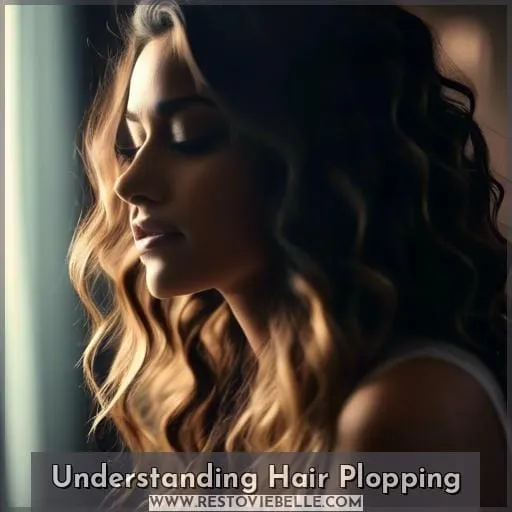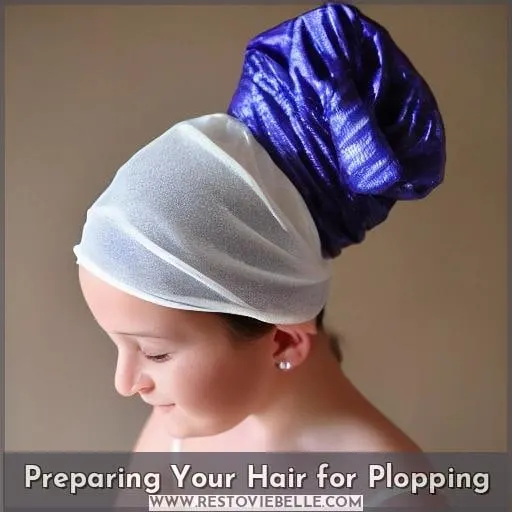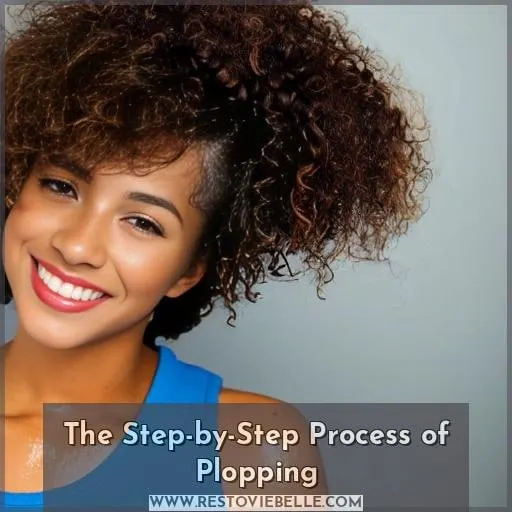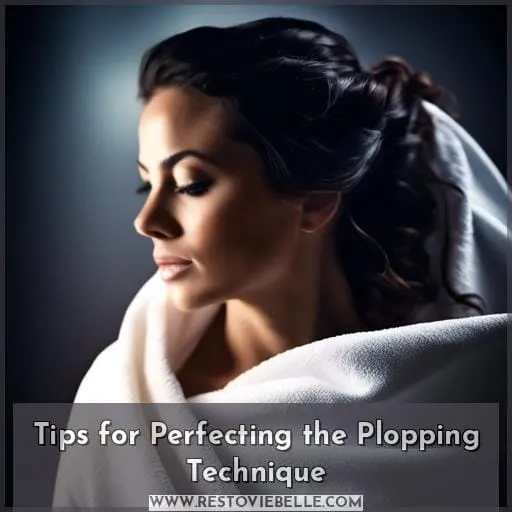This site is supported by our readers. We may earn a commission, at no cost to you, if you purchase through links.
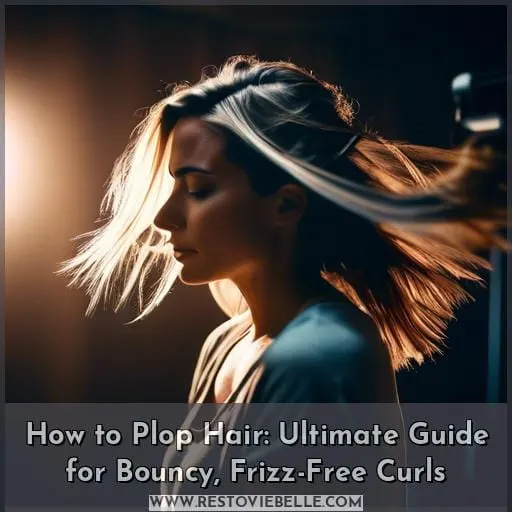 Discover the secret to bouncy, frizz-free curls with the art of hair plopping. This innovative, heatless drying technique is a game-changer for those with curly locks, promising to enhance your natural curl pattern while minimizing damage.
Discover the secret to bouncy, frizz-free curls with the art of hair plopping. This innovative, heatless drying technique is a game-changer for those with curly locks, promising to enhance your natural curl pattern while minimizing damage.
Whether you’re a seasoned curl enthusiast or new to the curly world, mastering how to plop hair can transform your hair care routine. Dive into this ultimate guide, where we’ll explore everything from the basics of plopping to expert tips for achieving the perfect plop.
Get ready to embrace your curls like never before.
Yes, you can learn how to plop hair for bouncy, frizz-free curls by wrapping wet curls in a microfiber towel or cotton T-shirt to air-dry without heat. This method helps maintain curl shape and reduce frizz, especially beneficial for curly hair types.
Table Of Contents
- Key Takeaways
- Understanding Hair Plopping
- Preparing Your Hair for Plopping
- Choosing the Right Fabric for Plopping
- The Step-by-Step Process of Plopping
- Tips for Perfecting the Plopping Technique
- Frequently Asked Questions (FAQs)
- Can hair plopping cause damage or stress to the hair follicles due to the weight of the hair being on top of the head?
- How does hair plopping affect colored or chemically treated hair differently than natural hair?
- Is there a risk of developing dandruff or scalp issues due to the consistent moisture environment created by overnight plopping?
- Can hair plopping contribute to or exacerbate pre-existing conditions like scalp psoriasis or eczema?
- Are there any specific considerations for plopping very long or thick hair to ensure even drying and curl formation?
- Conclusion
Key Takeaways
- Hair plopping is a heat-free styling technique that enhances curl definition, maintains curl shape, and reduces frizz by allowing curls to dry in a compact, accordion-like shape without the need for heat tools.
- Preparing hair for plopping involves washing with conditioner, applying styling products evenly, using a leave-in conditioner, and choosing a soft, absorbent fabric like a microfiber towel or cotton T-shirt for the best results.
- The choice of fabric for plopping is crucial, with microfiber towels being highly absorbent and gentle on curls to avoid frizz and damage, and cotton T-shirts being cost-effective and gentle on hair while reducing drying time and maintaining hair’s shape and volume.
- The step-by-step process of plopping includes flipping hair over to apply styling products, laying hair down on the spread-out fabric, folding and twisting the fabric around the head, securing it snugly but not too tightly, and leaving it for a duration ranging from 20 minutes to overnight depending on hair texture and personal preference.
Understanding Hair Plopping
Understanding hair plopping is like unlocking a secret level in the game of curly hair care. Imagine wrapping your wet, product-laden curls in a cozy cocoon that not only respects their natural pattern but also boosts their definition and fights the frizz monster—all without using heat.
Sounds like a dream, right? Well, that’s plopping for you. It’s not just a quirky name; it’s a game-changer for anyone blessed with waves, curls, or coils.
By plopping your hair, you’re essentially giving your curls VIP treatment. They get to dry in their natural state, piled high on your head, safe from the harsh world outside. This method cuts down drying time, because who’s the time to air dry for hours? Not to mention, it’s a fantastic way to avoid heat damage, keeping your curls healthy and happy.
Whether you’re a night owl who prefers plopping overnight or a morning bird looking for a quick plop-and-go, the flexibility of this technique fits into any schedule. Plus, it’s a perfect opportunity to use those styling products you love. They work overtime while your curls are bundled up, ensuring every strand is nourished and ready to bounce back into action.
So, if you’re looking to elevate your curl game, plopping might just be the secret sauce you’ve been missing. It’s not just about drying your hair; it’s about embracing and enhancing your natural texture, one plop at a time.
Preparing Your Hair for Plopping
Before you dive into the transformative world of hair plopping, let’s prep those locks for success. First things first, wash your hair as usual, but here’s the twist: be generous with your conditioner.
Think of it as laying the groundwork for those bouncy, frizz-free curls you’re after. Once you’ve rinsed, it’s time for the main event: product application. Whether you’re a mousse maestro or a gel genius, apply your go-to styler evenly, ensuring every strand is coated.
This isn’t just about hydration; it’s about setting the stage for plopping perfection.
Now, don’t rush through this next part. Your hair’s plopping benefits hinge on how well you apply those products. Got a leave-in conditioner that you swear by? Add a little extra. Remember, some of it will bid farewell as it gets absorbed by your chosen plopping fabric.
Speaking of which, don’t just grab any old rag. Your hair deserves the best—a soft, absorbent microfiber towel or a trusty cotton T-shirt will do the trick.
As for plopping duration, it’s not a one-size-fits-all. You might need a quick 20-minute session, or perhaps an overnight adventure suits your hair type better. It’s all about experimenting to find your hair’s happy place. And don’t forget those hair accessories! A few well-placed clips can add volume at the roots while you plop.
Choosing the Right Fabric for Plopping
Choosing the right fabric for plopping is crucial for achieving bouncy, frizz-free curls. Microfiber towels are highly recommended due to their super absorbent nature, which helps in quickly soaking up excess moisture without causing frizz or damage to your curls.
Alternatively, a cotton T-shirt can be a great, cost-effective option that’s gentle on the hair and helps in reducing drying time while maintaining your hair’s natural shape and volume.
It’s important to consider the absorbency level of the fabric you choose, as this will significantly impact the effectiveness of the plopping technique and the overall health and appearance of your curls.
Microfiber Towel Benefits
Choosing a microfiber towel for hair plopping is like picking a gentle guardian for your curls. Unlike the thirsty cotton that guzzles every drop of moisture, microfiber sips just enough, leaving your locks quenched, not parched.
Imagine a towel that can lug seven times its weight in water—now that’s drying efficiency. But here’s the kicker: it doesn’t strong-arm the essential oils and nutrients your hair needs to shine.
So, if you’re battling the frizz monster or your hair’s got more waves than the ocean, a microfiber towel is your knight in shining armor, keeping those tresses sleek without the squeak.
Cotton T-Shirt Usage
After diving into the benefits of microfiber towels, let’s not forget the humble cotton T-shirt, a true unsung hero in the world of hair care.
- T-shirt Porosity: Unlike rough towels, a soft cotton T-shirt has just the right porosity, gently hugging your curls without causing friction or frizz.
- Gentle Moisture Absorption: It strikes the perfect balance, removing excess water while leaving just enough moisture for beautifully defined curls.
- Reusing Old T-shirts: Not only is this method cost-effective, but it also gives your worn-out tees a new lease on life. Plus, using designated T-shirts can help prevent hair color transfer, keeping your locks and linens pristine.
So, next time you’re plopping, consider a cotton T-shirt for bouncy, frizz-free curls that are as happy as you’re saving an old tee from the landfill.
Absorbency Level Consideration
When choosing the right fabric for hair plopping, absorbency level is key. You want a material that’s just like Goldilocks’ porridge—not too absorbent, not too little, but just right.
Microfiber towels and cotton T-shirts are the go-to because they strike the perfect balance. They’re gentle on your curls, soaking up just enough water to reduce drying time without leaving your locks parched.
Plus, the right fabric texture can be a game-changer for curl enhancement and frizz control. So, don’t just grab any old rag; consider water retention and choose wisely to keep your curls looking like they’ve just had a day at the spa.
The Step-by-Step Process of Plopping
Ready to transform your curls into the envy of every spiral seeker? Let’s dive into the plopping technique, a curly girl’s secret weapon for maximizing moisture retention and curl definition while keeping shrinkage and hair damage at bay.
- Lay the Foundation: After washing, skip the vigorous towel-drying. Instead, flip your mane over and let your curls fall naturally. Apply your go-to styling potions, scrunching from tips to roots to encourage those curls to spring to life.
- Choose Your Champion: Grab a microfiber towel or a soft cotton T-shirt. Spread it out like a picnic blanket for your curls, and gently lay your locks down. This is where the magic happens, as your hair begins its transformation.
- Wrap It Up: Now, with the grace of a curl-whisperer, fold and twist the fabric around your head. Secure it snugly, but not too tight—you’re not trying to squeeze the life out of your curls, just guiding them to their bounciest potential.
Give it about 15 to 45 minutes, or if you’re feeling adventurous, let your curls marinate overnight.
Tips for Perfecting the Plopping Technique
To nail the art of plopping and give your curls that just stepped out of a salon look, keep these insider tips in your styling arsenal:
- Mind the Clock: Plopping duration is key. Too short, and you might as well have let your hair air-dry; too long, and you risk squashing your curls’ spirit. Aim for the sweet spot—usually between 15 to 45 minutes—to let your curls form without dampening their bounce.
- Texture Talk: Your hair texture isn’t just a conversation starter; it’s a roadmap to plopping success. Fine, wavy hair might need less time wrapped up, while thick, curly locks could use a longer plop to define those spirals.
- Product Savvy: Before you wrap, apply your styling products with a light hand. Think of your hair like a delicate pastry—too much filling, and it’s a soggy mess; too little, and it’s just… sad. Distribute evenly for that perfect curl definition.
- Scalp Care: Remember, your scalp is the garden where your hair blossoms. Keep it happy by ensuring it’s not drowning in product or suffocating under fabric. A little scalp moisture goes a long way, but too much can lead to a frizz fest.
By keeping these tips in mind, you’ll be well on your way to mastering the plopping technique and enjoying frizz-free, beautifully defined curls.
Frequently Asked Questions (FAQs)
Can hair plopping cause damage or stress to the hair follicles due to the weight of the hair being on top of the head?
No, hair plopping won’t cause damage or stress to your follicles due to the weight of your hair being on top of your head.
It’s a gentle, heat-free method that actually prevents damage, encouraging defined, frizz-free curls without pulling or twisting.
How does hair plopping affect colored or chemically treated hair differently than natural hair?
Hair plopping can be a game-changer for colored or chemically treated hair, which often thirsts for gentleness.
Just like a twist of fate, this technique cradles your delicate strands in a soft tee, reducing breakage and preserving vibrant hues.
Is there a risk of developing dandruff or scalp issues due to the consistent moisture environment created by overnight plopping?
Overnight plopping could indeed raise the risk of dandruff or scalp issues, as consistent moisture creates a fungal playground.
It’s like throwing a pool party for microbes without an invite—risky business for your scalp!
Can hair plopping contribute to or exacerbate pre-existing conditions like scalp psoriasis or eczema?
Hair plopping, while a godsend for defining curls, can indeed walk a fine line with scalp conditions like psoriasis or eczema.
Keeping your scalp in a moist environment overnight might just be the straw that breaks the camel’s back, exacerbating these conditions by trapping products and moisture against the skin, which can irritate sensitive areas.
Are there any specific considerations for plopping very long or thick hair to ensure even drying and curl formation?
For long or thick hair, plop with a microfiber towel to absorb more moisture and prevent a sopping mess.
Consider a second plop with a dry towel for even drying and bouncier curls.
Conclusion
Mastering the art of hair plopping is akin to unlocking a treasure chest of curly hair secrets. By choosing the right fabric and following a meticulous step-by-step process, you’re not just drying your hair; you’re embarking on a journey to redefine your curls’ potential.
Whether you opt for a microfiber towel’s gentle touch or the snug embrace of a cotton T-shirt, the essence of plopping lies in its ability to preserve your curls’ natural shape while warding off the dreaded frizz.
Embrace the technique, experiment with different fabrics and durations, and soon, you’ll find your curls bouncing with joy and freedom. Let the art of how to plop hair guide you to bouncy, frizz-free curls that are as effortless as they’re beautiful.

